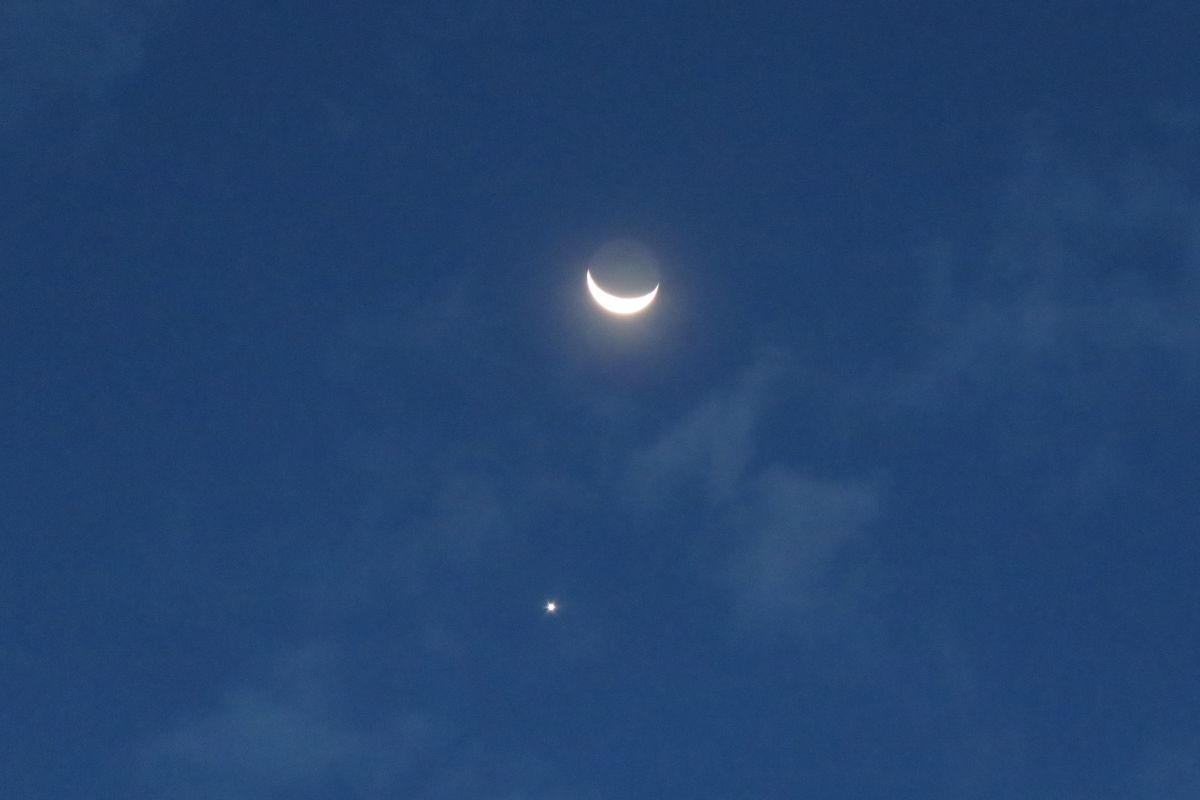Chronicles of the cosmos: discoveries of gravitational waves multiply
Astronomy: New debate on dark matter
In the evenings of this weekend we can see Jupiter, Saturn and Mercury forming a beautiful picture.
Mars is bright during the early part of the night and Venus is visible at dawn.
They shorten the nights
Once the solstice is over,
the nights start to get shorter
.
This shortening is now one minute each day, but it is getting progressively greater and, by the end of the month, the night will lose two minutes in favor of the day.
We therefore continue with long nights that, when they are cold and clear of clouds, are optimal for astronomical observation.
We can continue taking advantage to observe with the naked eye the trajectories of the brightest planets in the sky.
During the month of January we have the possibility of observing
the five that have been known since ancient times
.
Small among giants
In the evenings from Saturday 9 to Monday 12, around 6:30 p.m., we can attend a beautiful planetary appointment.
Mercury, the smallest planet in
the solar system, will be within apparent distance of the two largest, Jupiter and Saturn.
After forming their exceptional conjunction on December 21,
the gas giants are gradually separating
while they are still visible at twilight, on the southwestern horizon.
Mercury has a diameter that does not reach 5,000 kilometers, while that of Jupiter exceeds 140,000.
However, the small rocky planet is now five times closer than the giant Jupiter.
And this partially compensates for the large difference in brightness, so that Mercury appears only half as bright as Jupiter and considerably brighter than Saturn.
To observe this peculiar trio, you do not have to wait for nightfall.
You have to look for a well-clear horizon and look for the flashes of Jupiter among the reddish lights of twilight, and then try to see the other two less bright planets.
The discreet glow of Saturn will not be easy to see with the naked eye
.
But it will always be possible to photograph the planetary trio with the help of a small telescope.
East elongation
As the days progress, Mercury will become progressively more and more visible.
For example, at sunset on Thursday 14 we can see it
near the very fine edge of the crescent Moon
(which will have passed through the new moon the day before) and both stars will be at the same height above the horizon.
Mercury
will continue to look better and better as it moves away from the Sun
until it reaches its maximum distance (in astronomical slang, "its maximum east elongation") on January 24.
And after this day, when we get closer to our line of sight to the star king, its brightness will diminish very quickly.
Hellish desert
The smallest planet in the solar system is a desert
riddled with impact craters
.
The largest of them, Caloris, has a diameter of 1,500 kilometers, that is, about a third of the planetary diameter.
During the days on Mercury, which last 3 Earth months, temperatures exceed 400 degrees.
However, despite its hellish conditions,
some ice water remains near the poles
, in regions that are always in the shade.
Mars and venus
During the month of January, we can also see Mars during the first part of the night.
After dark it appears tall and bright on the southern horizon.
Although Mars is progressively moving away from its opposition (through which it passed on October 13),
its beautiful orange glow remains unmistakable
.
On the nights of Wednesday 20 and Thursday 21, the lunar crescent will be close to the red planet.
Venus and the Moon observed from Colombia in a sunrise in January 2019.Uhernandez / CC by 3.0
Finally, Venus, the brightest planet in our skies, is still visible just before sunrise, albeit very low, on the southeastern horizon.
Monday the 11th will form
a beautiful conjunction with the fine edge of the waning Moon.
If the sky is clear, it will be possible to observe the ashen light on the dark part of the Moon.
This light is the reflection of a reflection, since it comes from solar radiation that is reflected first on the Earth to later reach our satellite.
Rafael Bachiller
is director of the National Astronomical Observatory (National Geographic Institute) and academic of the Royal Academy of Doctors of Spain.
According to the criteria of The Trust Project
Know more
science
Science and Health
AstronomyThe 10 most outstanding space missions of 2021
AstronomyThe most extraordinary book in the history of astronomy, now exhibited at the National Library
Climate crisis UK sets new record for wind power by exceeding 50% of the country's electricity supply
See links of interest
Coronavirus
Check Child Lottery
Seville - Real Sociedad
Benevento - Atalanta
Mirandés - Rayo Vallecano
Granada CF - Barcelona
Osasuna - Real Madrid

